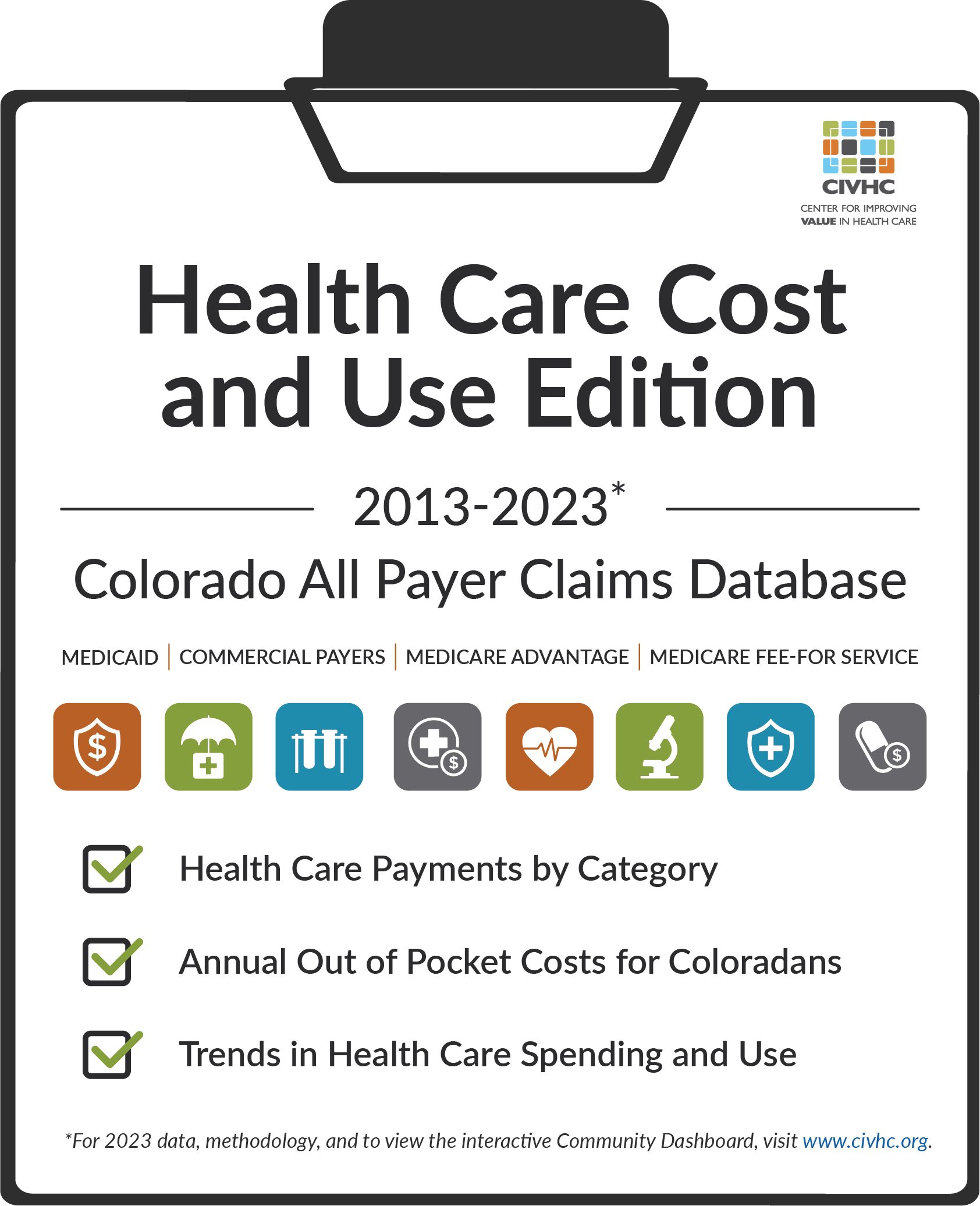Compare Health Care Data by Region
CIVHC’s Community Dashboard offers a window into how insured Coloradans use health care across the state — highlighting variation in cost and utilization that can inform smarter decisions and targeted interventions.
Drawing from the robust Colorado All Payer Claims Database (CO APCD), this interactive tool enables users to explore key health care indicators by county and region, including the percentage of people using their insurance, average service costs, and areas where low-value care may be occurring. Whether you’re a local leader, researcher, care provider, or simply curious about how your region compares, the Dashboard helps turn complex claims data into accessible, actionable insights.
- The claims data in this analysis includes all public and private health insurance payers submitting data to the CO APCD, which represents the majority of covered lives (70% of medically insured) in the state. The CO APCD does not include roughly half of the self-insured employer covered lives and does not include federal programs such as Tricare, Indian Health Services and the VA.
- Breast Cancer Screening measure:
- HEDIS measure result are subject to NCQA copywrite and disclaimers and have not been certified.
- CIVHC receives Medicare FFS data for the Breast Cancer Screening measure through the QECP program.
Use Cases
Community Based Organizations
- Identify community level disparities in cost and utilization to drive advocacy efforts and programs to bridge gaps in affordability and access.
Employers
- Benchmark employer per person per year health care costs and utilization of services vs. statewide and regional data to identify opportunities for improvement.
Policymakers & State Agencies
- Understand county and regional variation in health care utilization and costs, supporting the development of targeted policies to improve access and affordability in underserved communities.
Public Health Entities
- Develop targeted, evidence-based interventions, using data identifying specific health challenges across communities.
